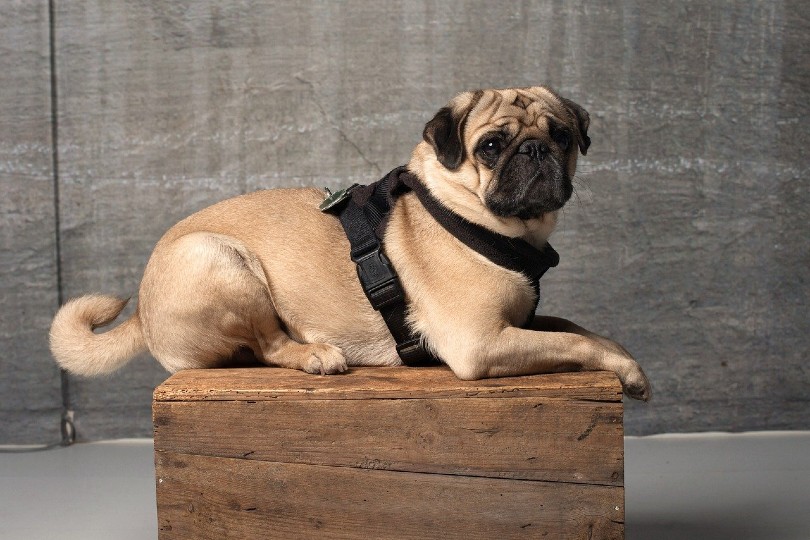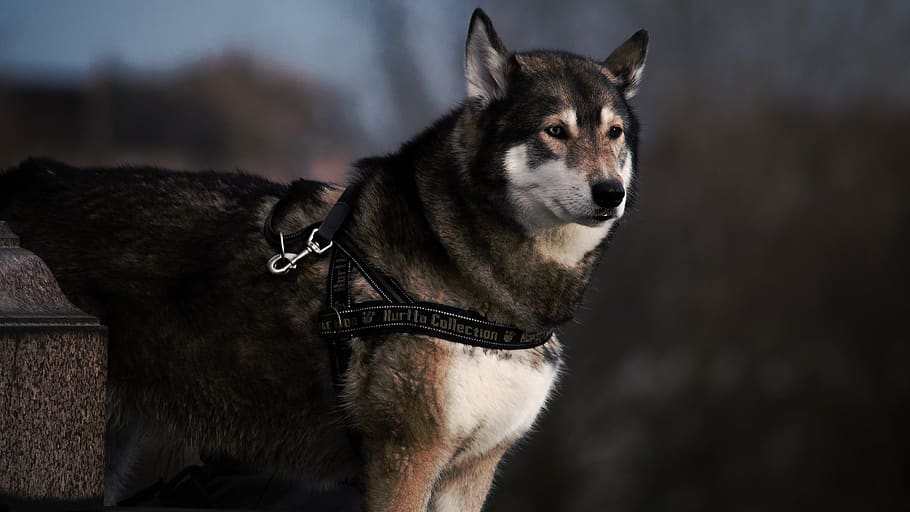5 Types of Dog Harnesses and Their Differences (With Pictures)

Updated on

Going for a walk with your dog should be a pleasant endeavor for both you and them. It helps to have the proper equipment for your dog, and the right harness is a great place to start.
Dog harnesses can be the perfect alternative to traditional neck collars. In addition to offering your dog extra comfort and less neck strain, a harness may be the best fit for your dog’s breed and body shape. Ideal for pugs, bulldogs, greyhounds, and whippets, harnesses also work well with dogs who have certain health concerns or psychological issues.
With so many variations of harnesses available for purchase, you may not know where to start Fortunately, we’ve narrowed it down to five different types, detailing the advantages and potential drawbacks of each style. From controlling small dogs to preventing pulling, read on to find the appropriate harness for your dog.
The 5 Types of Dog Harnesses
1. Back-Clip/Step-In Dog Harness
Chances are that you’ve seen these types of harnesses with their fashionable colors, bright patterns, and vest styles while out on walks, as well as lining the front shelves in pet stores. Back-clip, a.k.a. step-in harnesses not only look appealing on your dog, but they’re also easy to use, provide your beloved pet with extra comfort, and are ideal for little dogs, as well as dogs with small throats.
This harness slides up your dog’s front legs and clips in the back. A D-ring allows you to attach the leash. With the leash attachment elevated in this way, you’ll risk fewer leg entanglements, making it a great choice for running with your dog.
You’ll want to use a back-clip harness with a relatively calm dog. Its overall design does not deter pulling, jumping up, or other aggressive behaviors. In some cases, the freedom of this design may encourage your dog to pull.
2. Front-Clip Dog Harness
With a front-clip harness, you attach the leash at the center of your dog’s chest. When you give it a gentle tug to redirect your dog, your dog will turn toward you.
Unlike the back-clip harness, in which you have little directional control, the front-clip harness allows you to better guide where your dog is going. While it works well to lessen pulling, it still isn’t effective enough to tackle serious behavioral issues. Also, with the leash attached lower to the ground, you’ll encounter more leg entanglement.
3. Dual Clip Dog Harness
As the name implies, the dual clip harness clips in two places, on the back and the front, and uses a specially designed leash. The advantage of clipping at two points on the harness means greater control as you walk your dog.
Primarily, the back clip provides the strongest connection with the leash, but in the event your dog begins to lunge or pull off course, tension increases on the front clip, and you can easily redirect your dog.
Keep in mind that dual-clip harnesses tend to be more expensive. Also, their webbed design may cause excess rubbing around your dog’s shoulders.
4. Tightening Dog Harness
If your dog tends to pull excessively, you may want to consider a tightening harness, which applies uncomfortable pressure to deter this unwanted behavior. The harness remains well-fitted until your dog begins to pull. At that point, the harness constricts, signaling for your dog to stop.
It’s extremely important to use this type of harness only as a training tool and to purchase one with a gentle design. You’ll need to be careful that the harness does not overly tighten to avoid injuring your dog, which can potentially encourage aggressive behavior.
5. Head Halter Harness
Unlike the other harnesses on this list, which attach around your dog’s chest, a head halter straps around their neck, with an additional lead looped around the snout. The leash then attaches to a D-ring under the chin.
The purpose of a head halter harness is to guide your dog’s attention forward as you walk, which in turn, eliminates distracted behavior. When your dog begins to pull or lunge, the tension on the leash redirects your dog’s head down and toward you. This gentle reminder gives you greater control as you walk.
A head halter harness is not a muzzle nor is it designed to induce pain. Of course, for it to be effective, your dog’s breed can’t have a pushed-in snout. Also, they will need to adjust to wearing such a contraption around their face. If you succeed in placing the halter over your dog’s snout, you still may encounter your dog attempting to remove it.
Finally, if you use a head halter, be aware that you should never use it with a retractable leash and should avoid yanking it with any force to prevent pain and injury to your dog.

Final Thoughts
Choosing the right type of harness depends on your dog’s breed and behavior level. Small dogs and certain breeds for which neck collars are ineffective can greatly benefit from a back-clip harness. For dogs who occasionally pull, you can try a front-clip harness. For strong pullers, a dual-clip or head halter may be your best choice. If you are training your dog or working with a professional trainer, you may want to purchase a tightening harness.
We hope that after reviewing the five types of dog harnesses, you’ve found one that can make your next walk a fun and enjoyable experience for you and your dog.
Featured image credit: maniablack18, Pixabay















